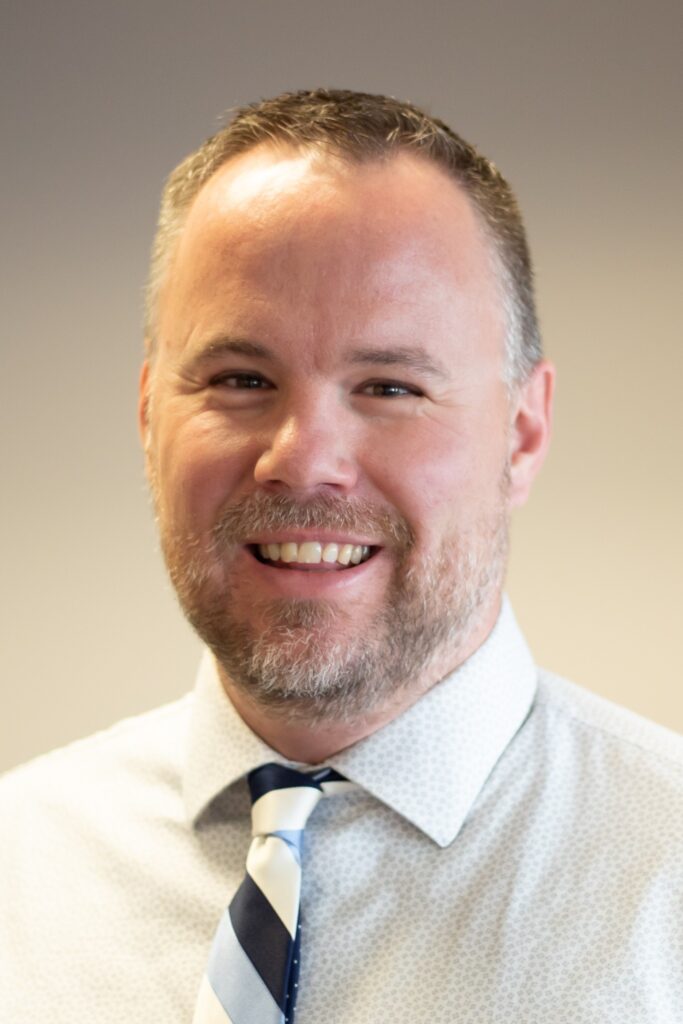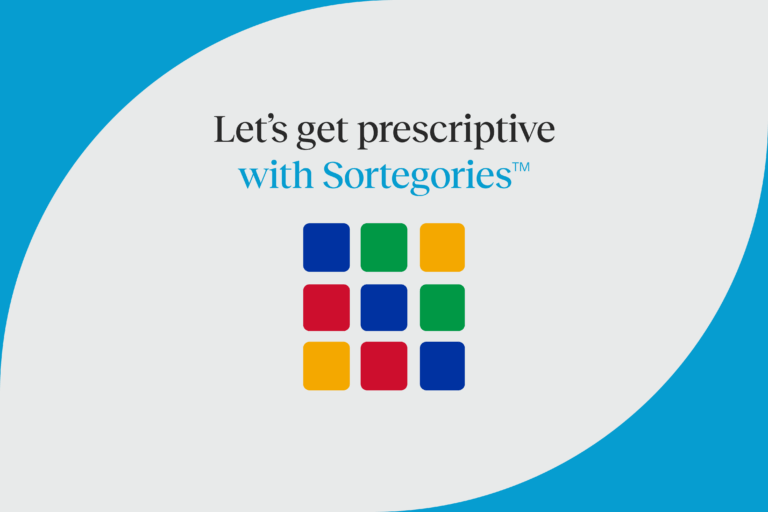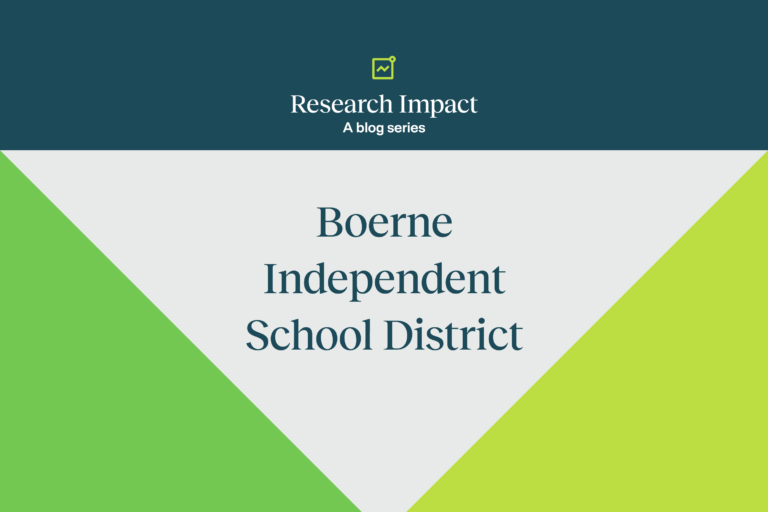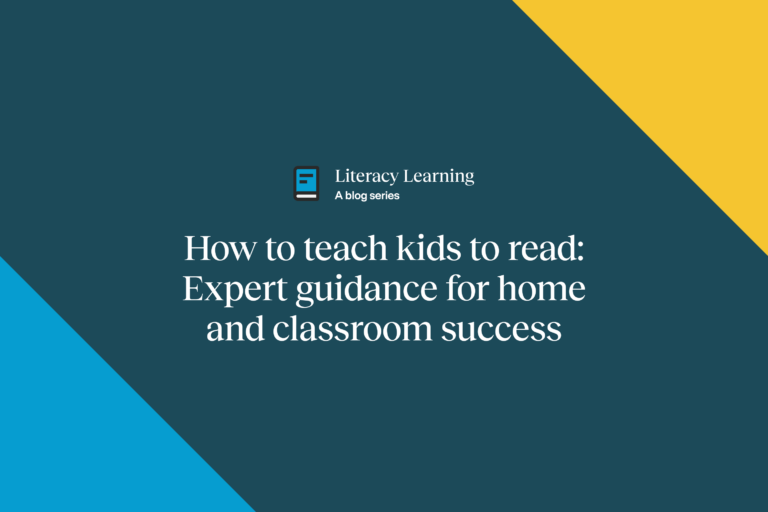Why would a large school district like Bozeman adopt Top 10 Tools?

In Bozeman, Montana there is a common saying: “When you know better, you do better.”
Casey Bertram is superintendent of Bozeman Public Schools. In 2019, Bertram and his district confronted the fact that they had a literacy problem. Their data was flat and parent feedback was showing them they needed to make significant changes in their literacy instruction. They met Dr. Deb Glaser and learned about Top 10 Tools® at the first Big Sky conference in Bozeman, organized by Dr. Danielle Thompson.
We interviewed Bertram for our Top 10 Tools blog post series. He made time in a very busy end-of-school week to share the Bozeman Public Schools literacy journey from balanced literacy to a district-wide science of reading implementation.

Key takeaways
- Quote: “…a lot of us in the room were thinking, “What? We are smart people. How did we not know about this? Why did our undergrad education fail us? Why have we not been engaging in this?” So we quickly embraced a “You know better, you do better” attitude.
- Motivation: Highest performing large school district but they had “very flat data” in literacy
- Catalyst for change: Top 10 Tools was required professional development. Science of reading became a real focus in their K-5 schools
- Biggest Aha moments: Student progress and student success—more proficient students and less students needing Tier 2 and Tier 3 intervention
Your district shifted from balanced literacy to the science of reading. How did that decision happen in your district?
Good question. Bozeman Public Schools has always been, currently and historically, the highest performing double A—so large school district—in Montana. And while we were proud of that, we knew that under the surface, we had an opportunity and achievement gap.
In 2019, we began digging deeper into that, engaging in professional learning communities and MTSS, and looking at our data. We had gone through a change in mathematics programming. We looked at best practices in math and did a lot of professional development on the front end and then adopted a new curriculum. We saw some immediate results.
On the literacy side, we had very flat data. You could say we drank the balanced literacy Kool-aid, and we believed that under that umbrella of “balanced literacy” it was all there— phonics and phonemic awareness, and we knew that we needed to bolster some phonics and phonemic awareness skills. So we were just throwing more strategies and actions at it, and it wasn’t moving the needle.
We were at a pivotal moment where we were going to tackle this reading goal and we understood we needed some outside help. And so it was in the vetting of consultants that we became aware of Dr. Danielle Thompson, CCC-SLP, former LETRS trainer, and president of The Reading League Montana.
Dr. “Nell” gave our administrative team and all of the building principals the state of Massachusetts assessment that’s used prior to getting your teaching license aligned to the science of reading. Most of us failed.
Then she proceeded to do some short professional development on the science of reading and the simple view of reading, and a lot of us in the room were thinking, “What? We are smart people. How did we not know about this? Why did our undergrad education fail us? Why have we not been engaging in this?” So we quickly embraced a “You know better, you do better” attitude.
Science of reading became a real focus in our K-5 schools. We did three years of professional development. All teachers dove deeply into Top 10 Tools. It was required professional development. They did those in their collaborative teacher teams, one tool at a time. So to answer your question, that was the catalyst for the change.
How many teachers trained? Administrators, across subjects, different levels of staff? Grades?
We began with K-5. Every building principal, basically every certified teacher within the building was required to move through the Top 10 Tools. We purchased those licenses and then rolled that out over a couple of years.
That was coupled with training from Dr. Nell as well. She came in and did walkthroughs and visits and some site-based training and modeling, and a lot of different pieces of the puzzle. That work was more focused on our classroom teachers, K-5, intervention staff, and special education staff. I think that was 2019 to ’22. More recently we onboard all of our new teachers as part of their required training for the district in their first couple years. They have to get through all of the Top 10 Tools so we’ve made it our professional development tool.
How did you learn about Top 10 Tools and what were the factors in choosing it over other SoR training options?
Dr. Nell was putting together the first Big Sky Literacy Summit that is held in Big Sky, Montana, bringing the top science of reading experts to one place. We began talking to Dr. Deb about the tools. We needed something that was relatively cost-effective, that was asynchronous, that would allow our teachers to do it in bite-sized pieces.
We also liked that it was videos and research coupled with some takeaway tools that you could try out. It checked all the boxes for us in terms of full scale implementation. We don’t have time in the schedule to bring everybody in for hours and hours of professional development. They had to be able to do it during their collaborative time, during professional in service days, and pace it out over a period of days. It was the right work, it was packaged in the right way, and it worked great for us.
What did the teachers say about the experience?
Picture one of those circles that have all the emotions on it. We saw all of that. We saw a veteran 30-plus year teacher saying, “Oh my gosh, I can’t believe I didn’t know this and thank you so much.” And we also had veteran 30-year teachers in tears and frustrated, saying “I can’t learn all of this new.” We had some saying, “You know this is just the pendulum swinging and it’ll take the other direction and everything in between.”
The majority of our staff were super appreciative of high quality professional development. They all took on the mantra “When we know better, we do better.” It aligned well with the professional learning communities work we were doing. They were running into roadblocks, and finding that some of the other authors’ material was not working for their kids despite their best efforts, great planning, great implementation, and professional development. And so it was overwhelmingly positive.
We also told them that, at the back end of it, we would make some curriculum adoptions. We weren’t having the adoption lead the process. We learned that lesson with the math adoption we did. We made it clear we were going to dive deeply into the research and into the professional development, really building teacher knowledge. At the end of it, we adopted a new curricular resource—we started with K-2, then 3-5. It was a no-brainer and they were really appreciative to have a tool, and a tool aligned with their training.
When and how did you see it starting to work?
I think the biggest Aha moments were student progress and student success. Historically, we were Tier twoing and Tier threeing ourselves out of Tier one issues. So when we shored up what was delivered in core instruction for 90 minutes to all kids, we were finding we had more proficient students and less students we needed to intervene with Tier 2 and Tier 3. Under the balanced literacy Kool-aid influence, we were building interventions based upon book levels. What does that even mean? I go back and look at what we were doing, and go, “Oh my gosh! I can’t believe we did that. What is that? What does it mean that you’re an A or a Z or an L or an M?”
And so the training really drove some changes with high quality assessment tools and diagnostic tools so that our Tier 2 and Tier 3 instruction was tied to the core but also very, explicitly tied to the skill deficits that students needed to have addressed with phonemic awareness or phonics or language or whatever the whatever components they were struggling with.
What did you hear from parents?
It was an interesting time because we were just starting our journey. Bozeman is a university community, with pretty affluent families. We were starting to get very engaged parents saying, “You know, my child’s K-5 reading experience is not producing what we want. We’re going out and finding a private evaluator doing dyslexia evaluation. They’re telling us that our child has dyslexia. You’re telling us they’re fine and they’re making progress on their balanced literacy.”
We were observing this disconnect. And so the timing was perfect. Parents embraced the changes. It took some parent training. We put out some newsletters and parent teacher conferences. We were really transparent saying, “We know better. We’re going to do better. We’re moving away from 3 queuing. We’re moving away from guided reading. We’re moving away from leveled readers. We’re moving towards all of these things. And as parents, this is what you can do.” We taught them about phonemic awareness. We did literacy nights. We taught them about teaching phonics. We talked to them about the right questions to ask and not to lean on picture cues or making guesses. We had pretty overwhelming parent support for the changes.
Have other districts noticed and taken inspiration from your success?
We’ve presented our findings. I think in Montana, they pay attention to Bozeman Public Schools because as I mentioned, we’re high-performing. At the literacy summit in the summer, we started seeing more Montana public schools showing up. There’s a lot of schools that are doing the work behind the scenes. The shift to science of reading and structured literacy is also aligned with some dyslexia legislation statewide. And then, probably the most exciting thing in this past legislative session is this—we’re a state that doesn’t have any sort of universal pre-K at all. And so the last legislative session they funded a robust summer school program for students with literacy needs, and they funded four-year-old programming for students with literacy needs. All of that needed to be aligned with the science of reading and high quality tools. We were just ahead of that. So now the funding is gravy on things we were already doing.
How has your relationship changed with data across the schools and districts?
Our training really changed the use of diagnostic tools and our understanding of what that really means. We changed our benchmark assessment tool—we moved from STAR Reading to Acadiance, using those Acadiance dashboards, breaking data down by skill deficit. So that was the biggest change. We had a lot of great structures in place—data meetings, MTSS structures, and professional learning communities—so it changed what was appearing on everyone’s spreadsheets so that we were now sorting kids by phonics scope and sequence versus sorting kids by A to Z where the curriculum publisher says “This is good for kids who are in M.” We don’t know it is, but they say it’s good for kids who are in M.
Now teachers are empowered, saying, “I know this group of kids is struggling with this phonics pattern and we’re honing in on that.” Or “I know these kids are struggling with language and academic vocabulary. We’re going to focus on that.”
The biggest change I’ve seen is it’s increased teacher knowledge. We had this disconnect that the reading expert was the one lone intervention teacher in the building, or the special education staff, and we would just do whatever they said. Now the entire collaborative team in 3rd grade or 2nd grade or 1st grade have really increased their knowledge and they all know what kids need and how kids learn to read.
It’s a bonus to have an intervention teacher. It’s a bonus to have special education staff because you can get group sizes to where you want them, but everybody in the room is sharing that knowledge. And so that’s been the biggest game changer. It’s no longer like an educational lottery where depending on what teacher you get is going to determine whether you’re successful or not. So they’re meeting collaboratively and everybody’s knowledge is where it needs to be. It’s always evolving, but that’s where we’re at now.
How has Top 10 Tools helped you fulfill your mission as an educator?
I’ve been in education for 22 years. Right at the beginning of 2020 I moved from a building principal role to central office. So it was right at the beginning of the Top 10 Tools when we were taking those teacher knowledge surveys as principals and we kind of figured out that “Oh my gosh, we drank the balanced literacy Kool-aid.” It was super vulnerable and humbling. I’ve had literally thousands of kids on my watch. And we’ve been going down this path that for some kids was actually having negative returns on investment of time and energy.
So that was uncomfortable. And we sat in that for about 2 minutes and then decided the only path forward is let’s just get on board. For me it was a mid-career reinvigoration of my why, and in our district, it reinvigorated that “All means all.” It was the catalyst for some people as they became superintendents. We made some pretty neat changes in district policy putting some equity policies in place and just systematically putting ourselves on the hook for the learning of all kids.
More recently, Bozeman is one of the fastest growing Spanish-speaking populations. The growth is tied to the adjacency to Big Sky Ski Resort and all of the construction that’s going on there. We went from a school district of 1% to 6% Hispanic students literally overnight. And so, that has dovetailed nicely with our shift to science of reading. Those kids have language needs. It fits perfectly into the simple view of reading and as teachers now, they’re empowered. They know how to do that. They know how to put that into their instruction and so it’s been a catalyst to a lot of good work.
Is there anything you’d like to add?
The affordability, the asynchronous design, and the quality make Top 10 Tools very adaptable so it can be rolled out in a variety of ways. And I would also caution that you can’t just have your teachers do the Top 10 Tools and expect transformation. It’s a piece of a puzzle. It works together with high quality assessments and it works together with high quality curriculum tools. It works together with MTSS systems and professional learning communities systems.
You will hear that language integrated through it, but each one of those things I just mentioned is a monster in and of itself. I would caution just dipping your toes in and saying “We’re doing the science of reading because we did the Top 10 Tools.” The science of reading also means we’re collaborating and using data and have data systems and the whole enchilada. It takes philosophy shifts and teacher vulnerability shifts, master schedule changes and other structural changes. Top 10 Tools is certainly supportive of that work.
I think where Top 10 Tools shines is we aligned it with those same pre and post knowledge surveys. We had our teachers do those anonymously. And we’re really able to show through data that, with full implementation of the Top 10 Tools, our teacher knowledge rose. I haven’t seen a professional development tool that can change teacher knowledge in such a profound way that’s asynchronous and affordable.
So I think that’s the beauty of it. We were going to Solution Tree for professional learning communities and we had other tools for MTSS and but the Top 10 Tools really provided that teacher knowledge directly tied to the science of reading where teachers didn’t have to go get a second master’s degree.
I think the other unintended awesomeness of this transformation was it put some pressure on our university system. Alongside our teachers growing their teacher knowledge, we were giving every student teacher coming to us from this university system those teacher knowledge surveys. We could point right to the Top 10 Tools. We were not seeing those things. Student teachers were not coming out with that expertise. And so we’ve seen the university in Montana State University shift considerably and their Teacher Ed program is now directly aligned to the science of reading. So cool things are happening.
Don’t miss the other posts in this 3-part series:
Get to know the only science of reading course you need
How Top 10 Tools created the foundation for literacy transformation across an entire school
To learn more and view a demo of Top 10 Tools by 95 Percent Group™, click here.



